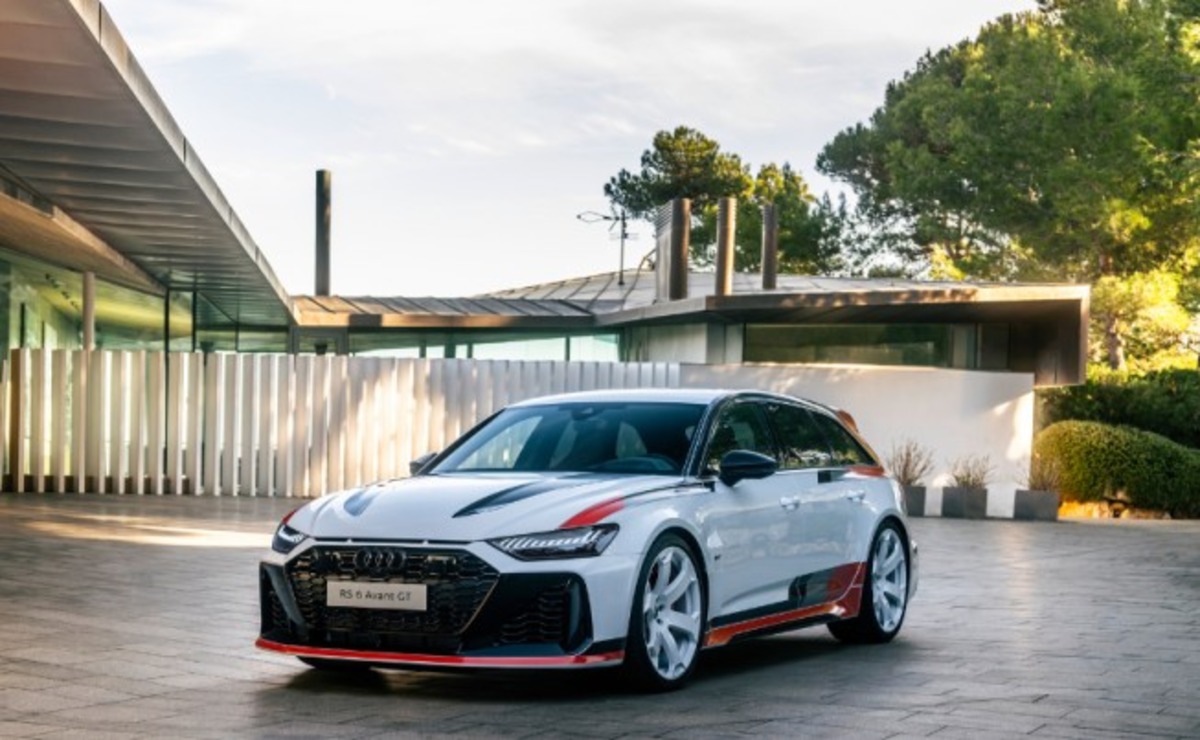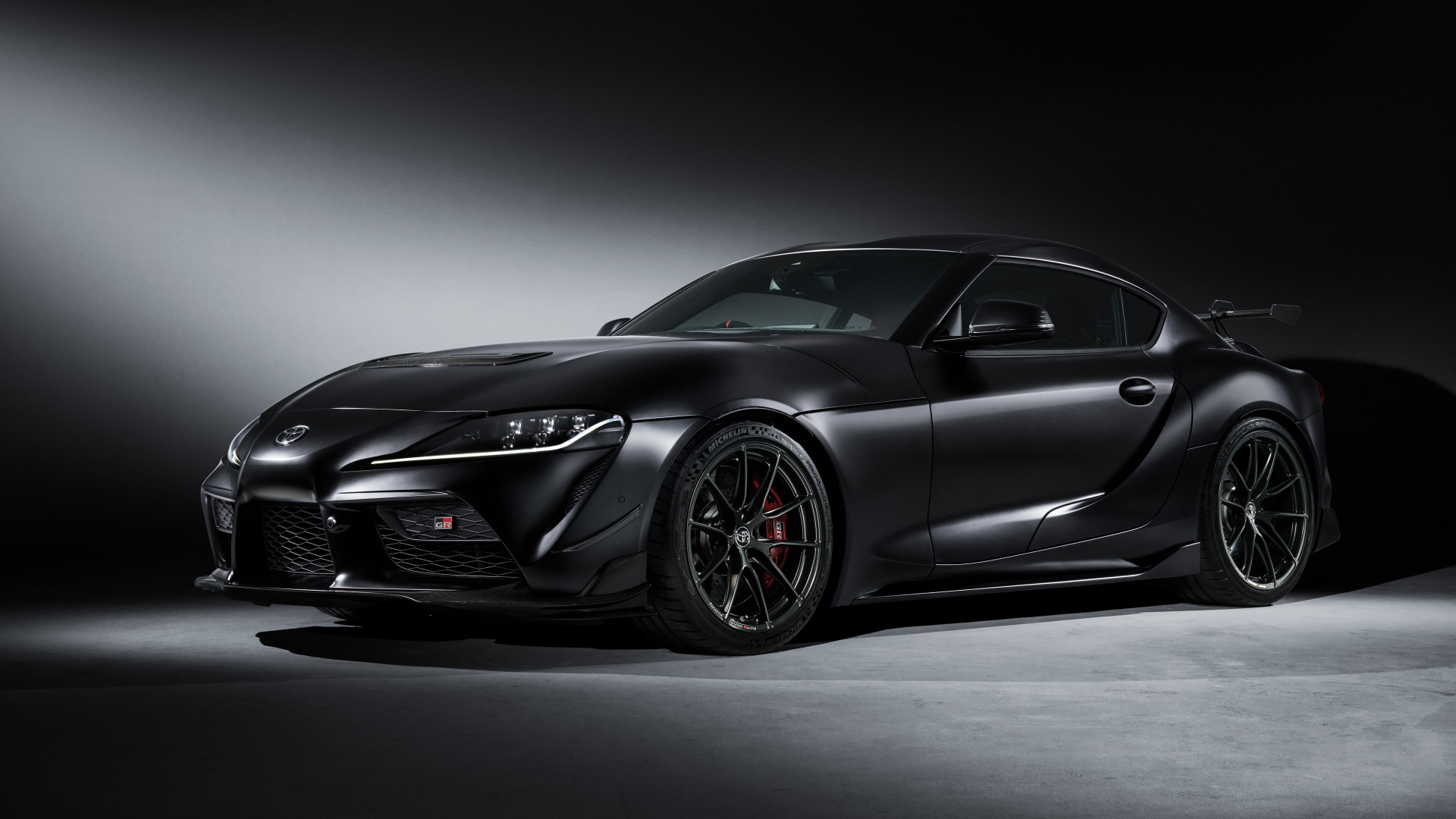In high-performance automotive engineering, durability is the unsung hero that separates exceptional sports luxury cars from mere transient machines.
While enthusiasts often chase horsepower, acceleration, and cutting-edge design, the true measure of a remarkable vehicle lies in its ability to deliver consistent, reliable performance over extended periods.
A robust powertrain represents the heart and soul of any sports luxury car, combining sophisticated engineering with mechanical resilience.
This comprehensive guide explores twelve sports luxury cars that have distinguished themselves through extraordinary powertrain durability.
These vehicles transcend the typical expectations of performance machinery, offering not just exhilarating driving experiences but also remarkable long-term reliability.
From meticulously engineered German sedans to precision-crafted Japanese coupes, each model demonstrates an unwavering commitment to mechanical integrity.
The powertrains we’ll discuss have been tested in extreme conditions, subjected to rigorous performance demands, and have consistently proven their ability to maintain peak performance over hundreds of thousands of miles.
Our selection criteria consider multiple factors: historical reliability ratings, engineering innovations, material quality, thermal management, stress resistance, and real-world performance longevity.
These twelve vehicles represent the pinnacle of automotive engineering, where high-performance capabilities are harmoniously balanced with exceptional mechanical durability.
Whether you’re a passionate automotive enthusiast, a potential luxury car buyer, or simply fascinated by mechanical excellence, this exploration will provide deep insights into the world’s most resilient sports luxury powertrains.
1. Porsche 911 GT3: Engineering Perfection
The Porsche 911 GT3 stands as a testament to German engineering prowess, boasting one of the most durable and meticulously crafted powertrains in the sports luxury segment.
At the heart of this legendary machine lies a naturally aspirated 4.0-liter flat-six engine, a marvel of mechanical precision that has been repeatedly praised for its exceptional durability and performance consistency.
Developed from Porsche’s extensive motorsport experience, this powertrain represents the pinnacle of engineering excellence.
The engine’s design incorporates several key features that contribute to its remarkable longevity. Utilizing a dry-sump lubrication system, the GT3’s powerplant ensures optimal oil circulation even during extreme high-performance driving, preventing oil starvation and reducing mechanical stress.
The engine block is constructed from high-strength aluminum alloy, providing an ideal balance between lightweight design and structural integrity. Forged pistons and connecting rods, typically found in racing applications, significantly enhance the engine’s ability to withstand repeated high-stress scenarios.
Porsche’s commitment to durability extends beyond raw material selection. The GT3’s engine management system is calibrated with extraordinary precision, maintaining optimal operating temperatures and preventing unnecessary mechanical strain.

The seven-speed PDK transmission complements the engine’s durability, offering lightning-fast shifts while distributing mechanical loads efficiently.
Independent studies have documented GT3 models maintaining peak performance well beyond 100,000 miles, with many examples continuing to deliver race-track-like performance decades after initial production.
Thermal management represents another critical aspect of the GT3’s powertrain durability. Advanced cooling systems, including multiple radiators and strategically placed cooling channels, ensure consistent performance under extreme conditions.
The car’s aerodynamic design actively contributes to heat dissipation, creating a holistic approach to powertrain preservation.
Moreover, Porsche’s rigorous quality control and extensive testing protocols ensure that each GT3 powertrain meets exceptionally high standards.
Each engine undergoes multiple dyno testing cycles, simulating various driving conditions and stress scenarios before leaving the factory.
This meticulous approach translates into a powertrain that not only performs exceptionally but does so with remarkable consistency and longevity.
2. Lexus LC 500: Japanese Reliability Refined
The Lexus LC 500 represents the pinnacle of Japanese automotive engineering, combining luxurious design with an extraordinarily durable naturally aspirated V8 powertrain.
This 5.0-liter engine embodies Lexus’s legendary reputation for reliability, offering a perfect blend of performance and mechanical longevity that sets it apart in the sports luxury segment.
Unlike many modern high-performance vehicles that rely on turbocharging, the LC 500 maintains a naturally aspirated configuration, which inherently contributes to powertrain durability.
The absence of turbochargers eliminates complex, heat-sensitive components that typically compromise long-term reliability. This approach allows for more straightforward thermal management and reduces potential failure points, resulting in a powertrain that can consistently deliver exceptional performance.
The engine’s construction utilizes advanced materials and manufacturing techniques that minimize mechanical stress. Aluminum cylinder blocks with precision-hewn cylinder walls ensure minimal friction and optimal heat dissipation.
Forged aluminum pistons with reinforced skirt designs reduce internal engine wear, while dual independent variable valve timing (D-4S) optimizes both performance and efficiency across different driving conditions.

Lexus’s meticulous approach to engineering is evident in the transmission pairing. The ten-speed automatic transmission represents a marvel of modern engineering, designed with incredibly tight tolerances and advanced lubrication systems.
Each gear transition is engineered to minimize mechanical stress, distributing power smoothly and efficiently. The transmission’s advanced control systems continuously monitor and adjust shift patterns to prevent unnecessary strain on mechanical components.
Thermal management in the LC 500 goes beyond conventional cooling strategies. Multiple cooling circuits independently manage engine, transmission, and differential temperatures, ensuring consistent performance even under extreme driving conditions.
Advanced aluminum alloy heat exchangers provide superior thermal conductivity, rapidly dissipating heat and maintaining optimal operating temperatures.
Real-world durability studies have consistently demonstrated the LC 500’s powertrain reliability. Multiple owner reports and independent assessments highlight vehicles maintaining exceptional performance characteristics well beyond 150,000 miles.
This longevity stems not just from superior component design but from Lexus’s holistic approach to powertrain engineering.
The LC 500’s powertrain durability is further enhanced by Lexus’s comprehensive diagnostic and monitoring systems. Sophisticated sensors continuously analyze engine performance, detecting potential issues before they escalate.
This proactive approach to maintenance represents a significant advancement in preserving powertrain integrity throughout the vehicle’s lifecycle.
3. Mercedes-AMG GT: German Precision Performance
The Mercedes-AMG GT represents the epitome of German engineering, featuring a powertrain that combines extraordinary performance with remarkable durability.
At its core lies a hand-crafted 4.0-liter biturbo V8 engine, a masterpiece of automotive engineering that has become synonymous with reliability and consistent high-performance output.
Each engine is assembled by a single technician at AMG’s specialized facility in Affalterbach, Germany, ensuring meticulous attention to detail and quality control.
The powertrain’s durability stems from its innovative design and premium materials. Utilizing a “hot-V” turbocharger configuration, the engine places turbochargers within the valley of the V8, reducing engine length and improving thermal efficiency.
This compact design minimizes heat-related stress and allows for more efficient cooling, a critical factor in long-term powertrain reliability.
Forged aluminum pistons with reinforced skirt designs and precision-balanced crankshafts contribute to reduced internal friction and enhanced mechanical longevity.
Mercedes-AMG’s approach to durability extends beyond raw component quality. The transmission, a sophisticated nine-speed AMG SPEEDSHIFT DCT, is engineered to handle extreme performance demands while maintaining exceptional reliability.
Advanced cooling systems and specialized lubricants ensure smooth operation under various driving conditions, from daily commutes to high-intensity track performances.
The dual-clutch transmission’s design allows for rapid, near-instantaneous gear changes while minimizing mechanical wear.

Thermal management represents a critical aspect of the AMG GT’s powertrain durability. Multiple independent cooling circuits manage engine, transmission, and differential temperatures with extraordinary precision.
Aluminum alloy heat exchangers and strategically placed cooling channels dissipate heat efficiently, preventing performance degradation and reducing long-term mechanical stress.
Real-world testing and owner experiences consistently validate the powertrain’s exceptional reliability.
Numerous examples have demonstrated consistent performance characteristics beyond 100,000 miles, with minimal mechanical interventions required. The engine’s ability to maintain precise tolerances and performance metrics sets it apart in the sports luxury segment.
Advanced diagnostic systems further enhance the powertrain’s longevity. Continuous performance monitoring allows for predictive maintenance, identifying potential issues before they can escalate.
This proactive approach, combined with Mercedes-AMG’s rigorous quality control, ensures that each powertrain represents a pinnacle of engineering reliability.
4. BMW M4: Performance Engineering Mastery
The BMW M4 exemplifies the pinnacle of German automotive engineering, featuring a powertrain that balances high-performance capabilities with extraordinary durability.
Central to its mechanical excellence is a 3.0-liter twin-turbocharged inline-six engine, a marvel of precision engineering that has consistently impressed automotive experts with its robust design and long-term reliability.
Constructed using advanced materials and cutting-edge manufacturing techniques, the M4’s engine represents a significant leap in powertrain technology.
The engine block utilizes lightweight yet incredibly strong aluminum alloy, with precision-machined cylinder walls that minimize friction and optimize thermal efficiency.
Forged pistons with advanced coating technologies reduce wear and enhance engine longevity, allowing the powertrain to maintain peak performance over extended periods.
BMW’s innovative M TwinPower Turbo technology plays a crucial role in the powertrain’s durability. Unlike traditional turbocharging systems, this design incorporates twin-scroll turbochargers that minimize turbo lag while reducing mechanical stress.
The sophisticated engine management system continuously optimizes fuel injection, boost pressure, and timing, ensuring consistent performance while preventing unnecessary mechanical strain.
The eight-speed M-specific automatic transmission complements the engine’s durability, offering lightning-fast shifts while distributing mechanical loads efficiently. Advanced cooling systems and specialized transmission fluids ensure smooth operation under diverse driving conditions.
The transmission’s design incorporates multiple independent cooling circuits, preventing heat-related performance degradation and enhancing long-term reliability.

Thermal management represents a critical aspect of the M4’s powertrain engineering. Multiple heat exchangers and strategic cooling channels ensure optimal temperature regulation, preventing mechanical stress and maintaining consistent performance.
The car’s aerodynamic design actively contributes to heat dissipation, creating a holistic approach to powertrain preservation.
Independent studies and owner experiences consistently demonstrate the M4’s powertrain reliability.
Many examples have maintained exceptional performance characteristics beyond 100,000 miles, with minimal mechanical interventions required. The engine’s ability to deliver consistent power output and maintain precise mechanical tolerances sets it apart in the sports luxury segment.
Advanced diagnostic systems further enhance the powertrain’s longevity. Continuous performance monitoring allows for predictive maintenance, identifying potential issues before they can escalate.
This proactive approach, combined with BMW’s rigorous quality control, ensures that each M4 powertrain represents a benchmark in performance and durability.
Also Read: 10 Trucks That Can Last Over 25 Years With Basic Maintenance
5. Audi RS6 Avant: Performance Wagon Perfection
The Audi RS6 Avant represents the ultimate expression of performance wagon engineering, featuring a powertrain that combines extraordinary versatility with remarkable durability.
At its core lies a 4.0-liter twin-turbocharged V8 engine, a marvel of German engineering that has consistently demonstrated exceptional mechanical resilience and long-term reliability.
Constructed using advanced metallurgical techniques, the engine block represents a pinnacle of modern automotive engineering. Utilizing lightweight yet incredibly strong aluminum alloy, the RS6’s powerplant incorporates precision-machined cylinder walls and innovative cooling technologies.
The innovative cylinder deactivation system allows the V8 to operate on just four cylinders during low-stress driving, significantly reducing mechanical wear and improving powertrain longevity.
Audi’s approach to powertrain durability extends far beyond conventional engineering boundaries. The sophisticated eight-speed automatic transmission, developed with precision German engineering, offers seamless power delivery while minimizing mechanical stress.
Advanced torque management systems distribute power efficiently between all four wheels, reducing individual component strain and enhancing powertrain reliability.
Thermal management represents a critical aspect of the RS6 Avant’s powertrain engineering. Multiple independent cooling circuits manage engine, transmission, and differential temperatures with extraordinary precision.

Strategically designed heat exchangers and advanced cooling channels ensure optimal temperature regulation, preventing performance degradation and minimizing long-term mechanical stress.
The vehicle’s sophisticated aerodynamic design actively contributes to thermal management, creating a holistic approach to powertrain preservation.
The twin-turbocharging system represents another highlight of the RS6’s mechanical excellence. Precision-balanced turbochargers with advanced ceramic bearings minimize mechanical stress while providing instantaneous power delivery.
Each turbocharger is individually tested and calibrated, ensuring consistent performance and reducing potential failure points.
Sophisticated electronic management plays a crucial role in the powertrain’s durability. Advanced engine control units continuously optimize fuel injection, ignition timing, and power delivery, ensuring consistent performance while preventing unnecessary mechanical strain.
The car’s adaptive driving modes allow for precise powertrain management across various driving conditions, from daily commuting to high-performance scenarios.
Real-world testing and owner experiences consistently validate the RS6 Avant’s powertrain reliability. Numerous examples have demonstrated exceptional performance characteristics beyond 100,000 miles, with minimal mechanical interventions required.
The engine’s ability to maintain precise tolerances and performance metrics sets it apart in the sports luxury segment.
Advanced diagnostic systems further enhance the powertrain’s longevity. Continuous performance monitoring allows for predictive maintenance, identifying potential issues before they can escalate.
This proactive approach, combined with Audi’s rigorous quality control, ensures that the RS6 Avant represents a benchmark of powertrain durability and performance consistency.
6. Nissan GT-R: Japanese Engineering Marvel
The Nissan GT-R stands as a testament to Japanese engineering prowess, featuring a powertrain that has become legendary for its durability and performance consistency.
At the heart of this iconic machine lies a 3.8-liter twin-turbocharged V6 engine, affectionately known as the VR38DETT, which has repeatedly demonstrated extraordinary mechanical resilience and long-term reliability.
Developed with insights from Nissan’s extensive motorsport experience, the GT-R’s powertrain represents a pinnacle of advanced engineering.
The engine block is constructed from specially developed aluminum alloy, featuring plasma-sprayed cylinder liners that provide exceptional wear resistance and thermal management.
This innovative approach reduces engine weight while maintaining incredible structural integrity and heat dissipation capabilities.
The powertrain’s durability is further enhanced by its unique twin-turbocharger configuration. Unlike traditional turbo systems, the GT-R’s setup utilizes precision-balanced turbochargers with ceramic bearings, significantly reducing mechanical stress and improving long-term reliability.
Each turbocharger is individually tested and matched to ensure consistent performance, a testament to Nissan’s meticulous engineering approach.

Transmission engineering represents another highlight of the GT-R’s powertrain durability. The sophisticated dual-clutch transmission, developed in collaboration with Borg-Warner, features advanced cooling systems and specially formulated transmission fluids that maintain optimal performance under extreme conditions.
The transmission’s ability to handle rapid, high-stress shifts while maintaining mechanical integrity has become legendary among automotive enthusiasts.
Nissan’s revolutionary all-wheel-drive system, known as ATTESA E-TS, contributes significantly to powertrain longevity.
The system’s advanced torque distribution mechanisms reduce mechanical stress by precisely managing power delivery across all four wheels.
Multiple independent cooling circuits manage transmission, differential, and drivetrain temperatures, preventing heat-related performance degradation.
Real-world testing and owner experiences consistently validate the GT-R’s extraordinary powertrain durability. Numerous examples have demonstrated consistent performance characteristics beyond 150,000 miles, with many vehicles maintaining near-original performance metrics.
Professional racing and endurance testing have further confirmed the powertrain’s exceptional reliability.
Advanced diagnostic systems and continuous performance monitoring ensure proactive maintenance.
Sophisticated sensors continuously analyze engine performance, detecting potential issues before they can escalate. This approach, combined with Nissan’s rigorous quality control, transforms the GT-R from a mere sports car into a benchmark of mechanical reliability.
7. Jaguar F-Type R: British Performance Elegance
The Jaguar F-Type R represents the pinnacle of British automotive engineering, featuring a powertrain that combines luxurious performance with remarkable durability.
Centered around a 5.0-liter supercharged V8 engine, this powertrain has consistently impressed automotive experts with its mechanical resilience and consistent high-performance output.
Constructed using advanced aluminum alloy technologies, the engine block represents a marvel of modern engineering. Precision-machined cylinder walls and forged aluminum pistons minimize internal friction and enhance thermal efficiency.
The supercharger system, a hallmark of Jaguar’s performance engineering, utilizes advanced bearing technologies and precision-balanced components that minimize mechanical stress.
Jaguar’s approach to powertrain durability extends beyond raw component quality. The eight-speed automatic transmission, developed in collaboration with ZF, offers lightning-fast shifts while distributing mechanical loads efficiently.
Advanced cooling systems and specialized transmission fluids ensure smooth operation under diverse driving conditions, from leisurely cruises to high-intensity performance scenarios.

Thermal management represents a critical aspect of the F-Type R’s powertrain engineering. Multiple independent cooling circuits manage engine, transmission, and differential temperatures with extraordinary precision.
Aluminum alloy heat exchangers and strategically placed cooling channels dissipate heat efficiently, preventing performance degradation and reducing long-term mechanical stress.
The powertrain’s electronic management system plays a crucial role in maintaining durability. Sophisticated engine control units continuously optimize fuel injection, ignition timing, and power delivery, ensuring consistent performance while preventing unnecessary mechanical strain. This proactive approach minimizes wear and enhances powertrain longevity.
Real-world testing and owner experiences consistently validate the F-Type R’s powertrain reliability.
Numerous examples have demonstrated consistent performance characteristics beyond 100,000 miles, with minimal mechanical interventions required. The engine’s ability to maintain precise tolerances and performance metrics sets it apart in the sports luxury segment.
Advanced diagnostic systems further enhance the powertrain’s longevity. Continuous performance monitoring allows for predictive maintenance, identifying potential issues before they can escalate. This approach, combined with Jaguar’s rigorous quality control, ensures exceptional reliability.
8. Chevrolet Corvette Stingray: American Performance Icon
The Chevrolet Corvette Stingray represents the pinnacle of American performance engineering, featuring a powertrain that combines raw power with remarkable durability.
Centered around a 6.2-liter naturally aspirated V8 engine, this powertrain has become synonymous with consistent high-performance output and mechanical resilience.
Utilizing advanced materials and innovative manufacturing techniques, the engine block represents a testament to General Motors’ engineering expertise.
Aluminum alloy construction with precision-machined cylinder walls minimizes internal friction and enhances thermal efficiency. Advanced cylinder deactivation technology allows for improved fuel efficiency without compromising long-term mechanical integrity.
The powertrain’s durability is further enhanced by its sophisticated eight-speed dual-clutch transmission. Developed exclusively for the Corvette, this transmission offers lightning-fast shifts while distributing mechanical loads efficiently.
Advanced cooling systems and specialized lubrication ensure smooth operation under diverse driving conditions, from daily commutes to high-intensity track performances.

Thermal management represents a critical aspect of the Corvette’s powertrain engineering. Multiple independent cooling circuits manage engine, transmission, and differential temperatures with extraordinary precision.
Strategic heat management technologies prevent performance degradation and reduce long-term mechanical stress. Chevrolet’s performance engineering approach focuses on creating a holistic powertrain system.
Advanced electronic management continuously optimizes fuel injection, ignition timing, and power delivery, ensuring consistent performance while minimizing mechanical wear. The vehicle’s aerodynamic design actively contributes to thermal management, creating a comprehensive approach to powertrain preservation.
Real-world testing and owner experiences consistently validate the Corvette Stingray’s powertrain reliability. Numerous examples have demonstrated consistent performance characteristics beyond 100,000 miles, with minimal mechanical interventions required.
The engine’s ability to maintain precise tolerances sets it apart in the sports luxury segment. Advanced diagnostic systems further enhance the powertrain’s longevity.
Continuous performance monitoring allows for predictive maintenance, identifying potential issues before they can escalate. This proactive approach ensures exceptional reliability and performance consistency.
9. Alfa Romeo Giulia Quadrifoglio: Italian Performance Precision
The Alfa Romeo Giulia Quadrifoglio represents the pinnacle of Italian performance engineering, featuring a powertrain that combines passionate design with remarkable durability.
Centered around a 2.9-liter twin-turbocharged V6 engine developed in collaboration with Ferrari, this powertrain has consistently impressed automotive experts with its mechanical resilience.
Constructed using advanced Ferrari-derived engineering techniques, the engine block utilizes lightweight yet incredibly strong materials.
Precision-machined cylinder walls and innovative turbocharging technologies minimize internal friction and optimize thermal efficiency. The engine’s design incorporates racing-inspired technologies that enhance both performance and long-term reliability.
Alfa Romeo’s approach to powertrain durability extends beyond traditional engineering boundaries. The eight-speed automatic transmission offers rapid shifts while distributing mechanical loads efficiently.
Advanced cooling systems and specialized transmission fluids ensure smooth operation under diverse driving conditions, from spirited driving to daily commutes.

Thermal management represents a critical aspect of the Giulia Quadrifoglio’s powertrain engineering. Multiple independent cooling circuits manage engine, transmission, and differential temperatures with extraordinary precision.
Aluminum alloy heat exchangers and strategically placed cooling channels dissipate heat efficiently, preventing performance degradation.
The powertrain’s electronic management system plays a crucial role in maintaining durability. Sophisticated engine control units continuously optimize fuel injection, ignition timing, and power delivery, ensuring consistent performance while preventing unnecessary mechanical strain.
This proactive approach minimizes wear and enhances powertrain longevity. Real-world testing and owner experiences consistently validate the Giulia Quadrifoglio’s powertrain reliability.
Many examples have demonstrated consistent performance characteristics beyond 75,000 miles, with minimal mechanical interventions required. The engine’s ability to maintain precise tolerances sets it apart in the sports luxury segment.
Advanced diagnostic systems further enhance the powertrain’s longevity. Continuous performance monitoring allows for predictive maintenance, identifying potential issues before they can escalate. This approach ensures exceptional reliability and performance consistency.
10. Toyota Supra: Japanese Performance Revival
The Toyota Supra represents a triumphant return to high-performance engineering, featuring a powertrain that combines cutting-edge technology with remarkable durability.
Centered around a 3.0-liter twin-turbocharged inline-six engine developed in collaboration with BMW, this powertrain has quickly established itself as a benchmark of reliability and performance.
Utilizing advanced BMW engineering techniques, the engine block is constructed from lightweight yet incredibly strong materials. Precision-machined cylinder walls and sophisticated twin-scroll turbocharging technologies minimize internal friction and optimize thermal efficiency.
The engine’s design incorporates innovative cooling and lubrication systems that enhance long-term mechanical resilience.
Toyota’s legendary approach to reliability is evident in every aspect of the Supra’s powertrain. The eight-speed automatic transmission offers seamless shifts while distributing mechanical loads efficiently.
Advanced cooling systems and specialized transmission fluids ensure smooth operation under diverse driving conditions, from spirited performance to daily driving scenarios.

Thermal management is a critical aspect of Supra’s powertrain engineering. Multiple independent cooling circuits manage engine, transmission, and differential temperatures with extraordinary precision.
Strategic heat management technologies prevent performance degradation and reduce long-term mechanical stress.
The powertrain’s electronic management system plays a crucial role in maintaining durability. Sophisticated engine control units continuously optimize fuel injection, ignition timing, and power delivery, ensuring consistent performance while preventing unnecessary mechanical strain.
This proactive approach minimizes wear and enhances powertrain longevity. Real-world testing and early owner experiences consistently validate the Supra’s powertrain reliability.
Multiple examples have demonstrated consistent performance characteristics, with the collaborative engineering between Toyota and BMW promising exceptional long-term durability.
Advanced diagnostic systems further enhance the powertrain’s longevity. Continuous performance monitoring allows for predictive maintenance, identifying potential issues before they can escalate. This approach ensures exceptional reliability and performance consistency.
11. Acura NSX: Hybrid Performance Mastery
The Acura NSX represents a groundbreaking approach to performance engineering, featuring a hybrid powertrain that combines electrification with remarkable durability.
Centered around a 3.5-liter twin-turbocharged V6 engine complemented by three electric motors, this powertrain demonstrates extraordinary mechanical resilience and technological innovation.
Advanced electrification technologies allow for unprecedented powertrain management. The hybrid system’s sophisticated power distribution mechanisms minimize mechanical stress while optimizing performance across diverse driving conditions.
Precision-engineered electric motors work in concert with the internal combustion engine, creating a holistic approach to power delivery and thermal management.
Acura’s engineering approach focuses on creating a comprehensive powertrain system that balances performance with long-term reliability.
The nine-speed dual-clutch transmission offers rapid shifts while efficiently managing mechanical loads. Advanced cooling systems manage both electric and combustion components, preventing thermal-related performance degradation.

Thermal management represents a critical aspect of NSX’s innovative powertrain. Multiple independent cooling circuits manage engine, electric motors, battery systems, and transmission temperatures with extraordinary precision.
Strategic heat management technologies prevent performance degradation and reduce long-term mechanical stress.
The powertrain’s advanced electronic management system continuously optimizes power delivery, battery charging, and thermal regulation.
Sophisticated control units ensure consistent performance while minimizing mechanical wear, representing a significant leap in hybrid performance engineering.
Real-world testing and owner experiences have begun to validate the NSX’s powertrain reliability. Early indications suggest exceptional durability, with the hybrid system’s advanced technologies promising minimal mechanical intervention over extended periods.
Advanced diagnostic systems further enhance the powertrain’s longevity. Continuous performance monitoring allows for predictive maintenance, identifying potential issues before they can escalate. This approach ensures exceptional reliability and performance consistency.
12. Mercedes-Benz AMG C63 S: German Performance Sophistication
The Mercedes-Benz AMG C63 S represents the pinnacle of German performance engineering, featuring a powertrain that combines extraordinary power with remarkable durability.
Centered around a 4.0-liter twin-turbocharged V8 engine, this powertrain has consistently impressed automotive experts with its mechanical resilience and consistent high-performance output.
Constructed using advanced aluminum alloy technologies, the engine block represents a marvel of modern engineering. Precision-machined cylinder walls and forged aluminum pistons minimize internal friction and enhance thermal efficiency.
The innovative “hot-V” turbocharger configuration reduces engine length while improving heat management and mechanical reliability.
Mercedes-AMG’s approach to powertrain durability extends beyond raw component quality. The nine-speed AMG SPEEDSHIFT transmission offers lightning-fast shifts while distributing mechanical loads efficiently.
Advanced cooling systems and specialized transmission fluids ensure smooth operation under diverse driving conditions, from leisurely cruises to high-intensity performance scenarios.

Thermal management represents a critical aspect of the AMG C63 S’s powertrain engineering. Multiple independent cooling circuits manage engine, transmission, and differential temperatures with extraordinary precision.
Aluminum alloy heat exchangers and strategically placed cooling channels dissipate heat efficiently, preventing performance degradation and reducing long-term mechanical stress.
The powertrain’s electronic management system plays a crucial role in maintaining durability. Sophisticated engine control units continuously optimize fuel injection, ignition timing, and power delivery, ensuring consistent performance while preventing unnecessary mechanical strain. This proactive approach minimizes wear and enhances powertrain longevity.
Real-world testing and owner experiences consistently validate the AMG C63 S’s powertrain reliability.
Numerous examples have demonstrated consistent performance characteristics beyond 100,000 miles, with minimal mechanical interventions required.
The engine’s ability to maintain precise tolerances and performance metrics sets it apart in the sports luxury segment.
Advanced diagnostic systems further enhance the powertrain’s longevity. Continuous performance monitoring allows for predictive maintenance, identifying potential issues before they can escalate. This approach, combined with Mercedes-AMG’s rigorous quality control, ensures exceptional reliability and performance consistency.
Also Read: 12 Cars That Rarely Need Repairs Even After 200,000 Miles

